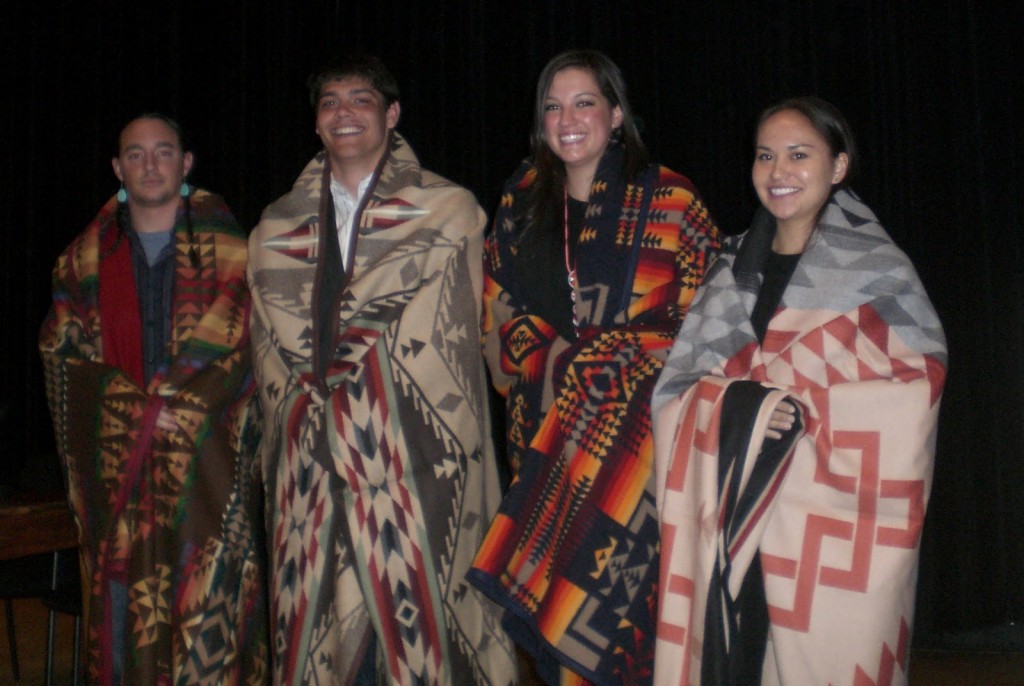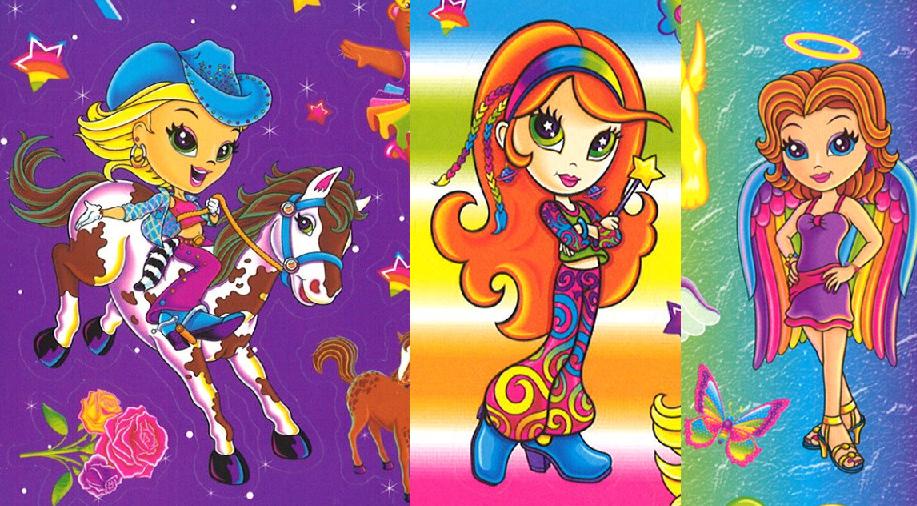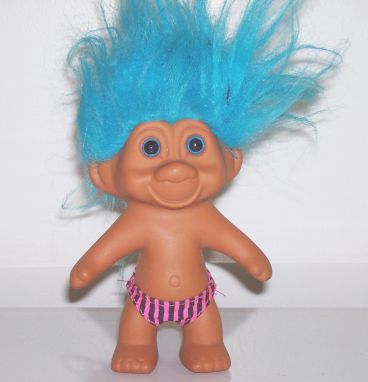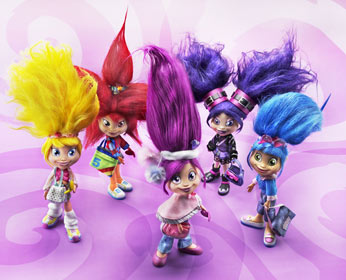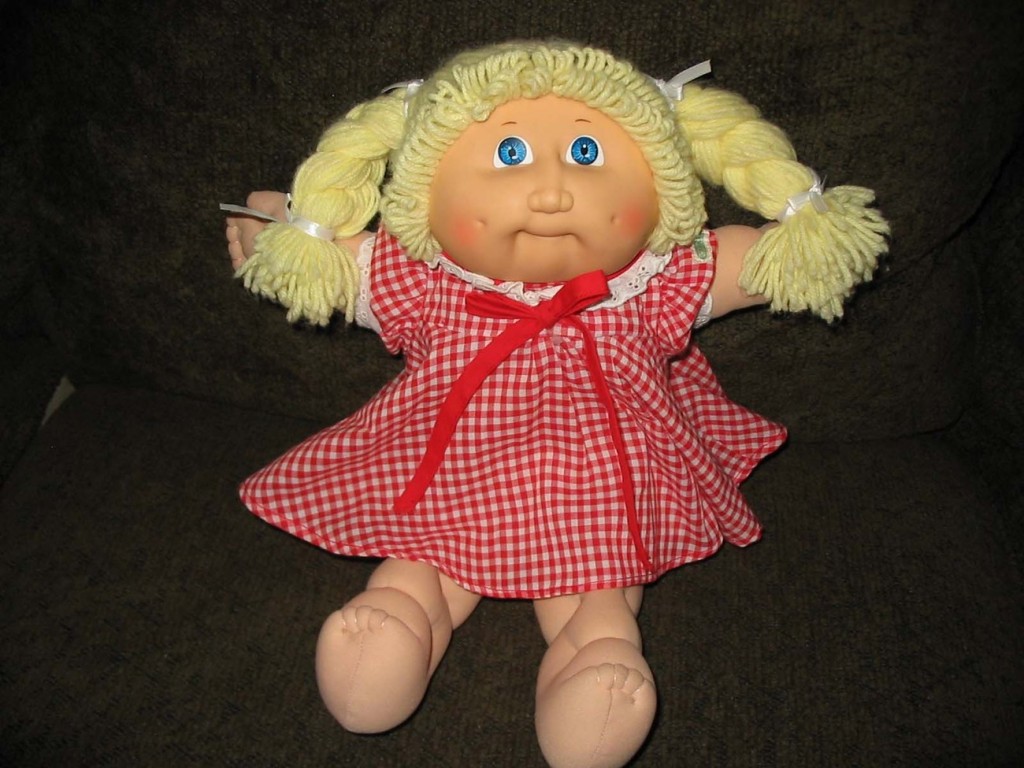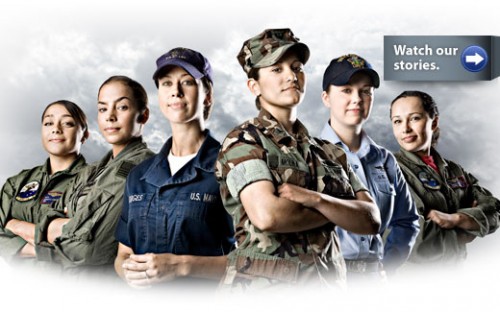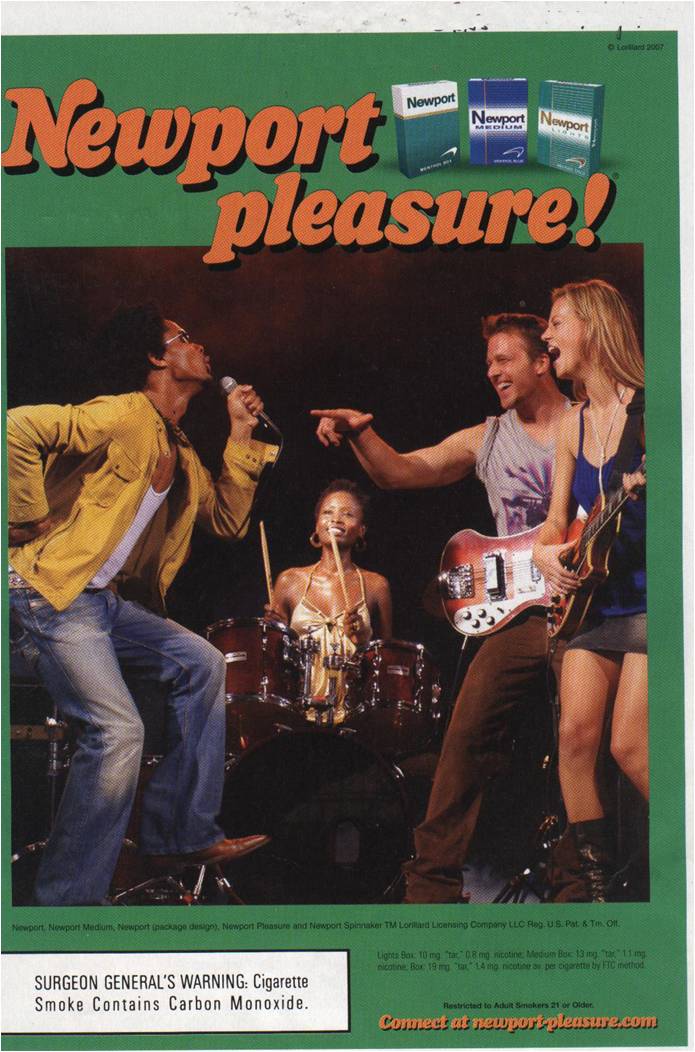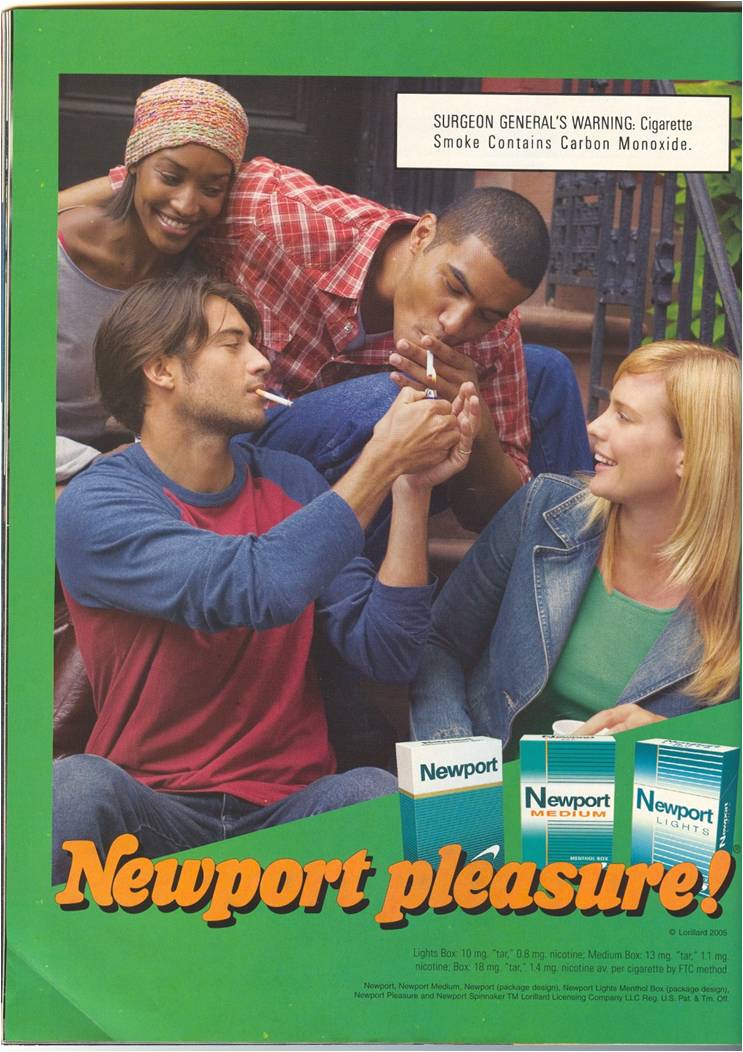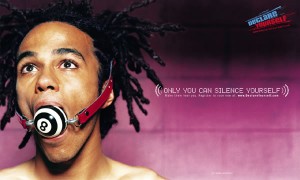Last night I was cold. So cold, in fact, that I had to pull out not one, but two, of my Pendleton blankets to add some extra warmth to my bed. As I shook them out and laid them on my bed, I thought about how special these blankets are to me–one was a graduation gift, the other a thank you gift for serving on a panel about the “Future of Indian Education.” In many Native communities, Pendleton blankets are associated with important events, and have been for hundreds of years. They are given as gifts at graduations, at powwow give-aways, as thank you gifts, in commemoration of births and deaths, you name it. In addition, I’ve always associated the patterns with Native pride — a way for Natives to showcase their heritage in their home decor, coats, purses, etc. There’s something just distinctly Native about Pendleton to me.
Stanford Native Graduation from a couple years ago:
But recently, Pendleton prints and fabrics have started popping up everywhere. It started with Opening Ceremony’s Pendleton line in 2010, and now Urban Outfitters has started carrying a Pendelton line, celebrities are wearing Pendleton coats, and Native-themed home decor is apparently all the rage. Now Pendleton has announced their newest collaboration, The Portland Collection, which fashion blogs are proclaiming will be the big thing for 2011.
So what’s the problem? I openly admit that a lot of these designs are adorable, and I would fully sport them (that bag! I love!), if I had a spare $1000 or so. I can’t cry straight up cultural appropriation, because…well, it’s complicated.
Pendelton has been supplying Natives with blankets and robes with Indian designs since the late 1800’s, which the “history” section of their website outlines:
A study of the color and design preferences of local and Southwest Native Americans resulted in vivid colors and intricate patterns. Trade expanded from the Nez Perce nation near Pendleton to the Navajo, Hopi and Zuni nations. These Pendleton blankets were used as basic wearing apparel and as a standard of value for trading and credit among Native Americans. The blankets also became prized for ceremonial use.
It’s almost a symbiotic relationship — they saw a market in Native communities, and Native communities stepped up and bought, traded, and sold the blankets, incorporating them into “traditional” cultural activities. Pendleton has also maintained close ties with Native communities and causes, making commemorative blankets for organizations like the National Museum of the American Indian and the National Indian Education Association. They work with Native artists to design the special edition blankets, and even donate some of the proceeds to the causes.
 (NIEA 40th anniversary blanket)
(NIEA 40th anniversary blanket)
But then, on the other hand, they go off and do things like design a $5000 blanket with White Buffalo hair, which many tribes consider extremely sacred and definitely off-limits to commercial sale.
I do appreciate Pendleton’s relationship with Native communities. I love my blankets, and love even more what they represent.
However, seeing hipsters march down the street in Pendleton clothes, seeing these bloggers ooh and ahh over how “cute” these designs are, and seeing non-Native models all wrapped up in Pendleton blankets makes me upset. It’s a complicated feeling, because I feel ownership over these designs as a Native person, but on a rational level I realize that they aren’t necessarily ours to claim. To me, it just feels like one more thing non-Natives can take from us — like our land, our moccasins, our headdresses, our beading, our religions, our names, our cultures weren’t enough? you gotta go and take Pendleton designs too?
Then there’s the whole economic stratification issue of it too, these designs are expensive. The new Portland collection ranges from $48 for a tie to over $700 for a coat, the Opening Ceremony collection was equally, if not more, costly. It almost feels like rubbing salt in the wound, when poverty is rampant in many Native communities, to say “oh we designed this collection based on your culture, but you can’t even afford it!”
Personally, the bottom line is that I would rather associate Pendleton with Native pride and commemorating important events…
…than with hipsters, high fashion, and flash-in-the-pan trends. But I’m obviously conflicted. What do you think? Are these designs and trends ok, or do I have a right to be upset?


